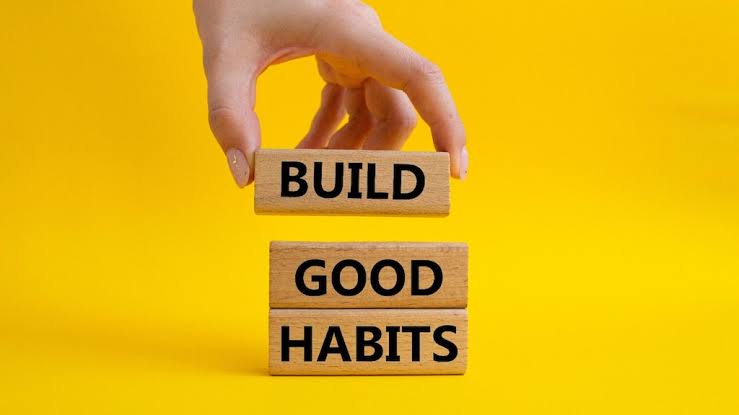Building healthy habits is a simple way to improve your body, mind, and emotions. Many people find it hard to keep routines going. Life in 2025 is fast and full of digital distractions, so knowing how habits form is important for staying consistent and disciplined. Unlike willpower, which can run out, habits work automatically once you build them, making good choices easier over time. Learning how habits work in the brain can help you grow, stay healthy, and get more done.
Understanding How Habits Are Formed
Habits are formed through a neurological loop involving three key components: the cue, the routine, and the reward. This loop, widely recognized by researchers like Charles Duhigg and backed by neuroscience, is how behaviors become automatic. The cue triggers your brain to initiate the behavior, the routine is the actual habit or action, and the reward reinforces the behavior, telling your brain that it’s worth remembering.
In the early stages of habit formation, this loop requires conscious effort. Over time, however, your brain starts to crave the reward and automatically responds to the cue. For example, waking up (cue), going for a run (routine), and feeling energized (reward) gradually form a morning exercise habit. The brain’s basal ganglia plays a crucial role in this process, essentially wiring the habit into your subconscious.
By breaking behaviors down into these components, you can identify why bad habits stick and how to replace them with healthier alternatives. Replacing the routine while keeping the cue and reward consistent is a proven method for reshaping behavior patterns.
The Role of Consistency and Repetition
Consistency is fundamental in habit formation. Research shows it takes, on average, 66 days to form a new habit, though this number can vary based on the behavior’s complexity and individual circumstances. The more frequently a habit is performed, the stronger the neurological pathway becomes, eventually turning the habit into a part of your identity.
Repetition reinforces muscle memory and mental associations, reducing the need for decision-making over time. This is why habits like brushing your teeth or drinking water in the morning feel second nature. By doing something daily, you reduce the friction that comes with starting from scratch every time.
To improve consistency, start small. Tiny, manageable habits—like stretching for five minutes or drinking a glass of water—are easier to integrate into your routine. Once these mini-habits take root, they often lead to more significant behavioral changes over time.
The Importance of Environment and Triggers
Your environment plays a powerful role in shaping your habits. Often, your surroundings either support or sabotage your efforts to build new routines. Environmental cues—visual, auditory, or even social—can trigger automatic behaviors without conscious intention.
For example, placing your running shoes by the door acts as a visual cue that nudges you to exercise. Keeping junk food out of the house makes it less likely you’ll reach for it during moments of weakness. Likewise, surrounding yourself with people who embody the habits you want to build increases your chances of success.
Changing your environment to support your goals can be more effective than trying to rely on motivation alone. Make healthy behaviors the default option—prepare meals in advance, use apps to remind you to move, and set screen time limits if reducing tech usage is your goal.
Using Habit Stacking and Anchoring Techniques
Habit stacking is a technique where you build a new habit by linking it to an existing one. This concept, popularized by author James Clear, leverages the automatic nature of your current habits to make forming new ones easier. For instance, you might decide to meditate for five minutes right after brushing your teeth or drink a glass of water immediately after waking up.
Anchoring a new behavior to an already established routine increases the likelihood of follow-through because the cue is already built into your daily life. Over time, the brain begins to associate the two actions, making the new habit feel natural rather than forced.
This strategy works particularly well for busy individuals who find it hard to carve out new time slots for additional activities. By integrating small changes into existing routines, you reduce resistance and gradually rewire your daily behavior patterns.
Overcoming Setbacks and Staying Resilient
No habit-building journey is perfect. Setbacks are inevitable, but how you respond to them determines long-term success. It’s essential to understand that breaking a streak doesn’t erase your progress. In fact, studies show that missing a day or two has little long-term effect on habit formation, as long as you get back on track quickly.
Building resilience involves self-compassion and reframing failure as part of the process. Instead of seeing a lapse as a reason to quit, view it as a learning opportunity. What triggered the slip-up? How can you modify your approach to avoid it in the future?
Keeping a habit tracker or journal can help you visualize your progress, maintain accountability, and stay motivated. Celebrating small wins reinforces the reward loop, making it easier to bounce back after minor disruptions.
Leveraging Technology for Habit Tracking
As of 2025, a variety of apps and wearable technologies are available to help monitor and reinforce healthy habits. From simple reminder apps to sophisticated habit trackers integrated with smartwatches and AI assistants, digital tools can play a significant role in maintaining consistency.
Apps like Habitica, Streaks, and Productive gamify the process of habit-building, turning it into an engaging and rewarding experience. Meanwhile, devices like Fitbit, Apple Watch, and WHOOP provide real-time data on sleep, movement, and health metrics, allowing users to track progress objectively.
AI algorithms are now able to provide personalized insights, suggesting optimal times for workouts, sleep, and hydration based on your behavior patterns. These tools offer both motivation and a sense of accountability, especially when paired with community support or progress sharing.
Conclusion: Turning Habits into a Lifestyle
Building healthy habits is not about making massive changes overnight—it’s about committing to small, consistent actions that align with your goals and values. With the support of neuroscience, psychology, and modern technology, forming lasting habits is more achievable than ever in July 2025.
By understanding how habits work, designing your environment to encourage good behavior, using techniques like habit stacking, and staying resilient through setbacks, you can gradually transform your life. The key is not perfection, but persistence. Healthy habits, once formed, become the quiet force behind your success and well-being for years to come.



